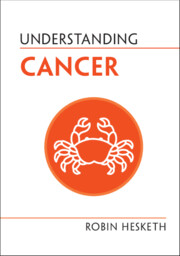Book contents
- Understanding Cancer
- Series page
- Understanding Cancer
- Copyright page
- Reviews
- Dedication
- Contents
- Foreword
- Preface
- Acknowledgements
- Gene Names
- 1 Painting a Clear Picture
- 2 Ancient History
- 3 Counting Cancer
- 4 From DNA to Protein
- 5 What Is a Cell?
- 6 Mutations
- 7 Causes of Cancer That Can be Controlled
- 8 Causes of Cancer That Are Difficult to Control, Accidents … and Other Things
- 9 Treating Cancer by Chemotherapy
- 10 The Road to Utopia?
- Concluding Remarks
- Summary of Common Misunderstandings
- References
- Figure Credits
- Index
- References
References
Published online by Cambridge University Press: 17 May 2022
- Understanding Cancer
- Series page
- Understanding Cancer
- Copyright page
- Reviews
- Dedication
- Contents
- Foreword
- Preface
- Acknowledgements
- Gene Names
- 1 Painting a Clear Picture
- 2 Ancient History
- 3 Counting Cancer
- 4 From DNA to Protein
- 5 What Is a Cell?
- 6 Mutations
- 7 Causes of Cancer That Can be Controlled
- 8 Causes of Cancer That Are Difficult to Control, Accidents … and Other Things
- 9 Treating Cancer by Chemotherapy
- 10 The Road to Utopia?
- Concluding Remarks
- Summary of Common Misunderstandings
- References
- Figure Credits
- Index
- References
- Type
- Chapter
- Information
- Understanding Cancer , pp. 204 - 214Publisher: Cambridge University PressPrint publication year: 2022

